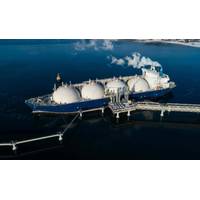Sinopec Gets Nod for Coal-to-Gas Pipeline
China has approved a pipeline to transport synethic gas from coal-to-gas projects in the country's far west to the southern coast, energy giant Sinopec said on Wednesday.
The pipeline, which would run 8,400 kilometres (5,200 miles) from the restive region of Xinjiang to the manufacturing hub of Guangdong province, carrying up to 30 billion cubic metres (bcm) gas a year, has a price tag of over 130 billion yuan ($20.5 billion), Sinopec said in a statement.
The pipeline could eventually also transport conventional gas, shale gas and coal-bed methane, the statement said.
China, the world's largest energy consumer, has made largely untested coal-to-gas technology a key part of its strategy to boost the use of cleaner fuels as it battles pollution in its big cities.
Last September, Sinopec, whose flagship listed entity is Sinopec Corp , said it would push ahead with plans to build a coal-to-gas plant in Xinjiang with a capacity of 8 bcm a year - the country's largest - shaking off worries the $10 billion scheme could be hit by cost overruns that have dogged similar projects.
Coal-to-gas technology, similar to that used in apartheid-era South Africa to make oil from coal, uses vast volumes of water and produces a large amount of carbon dioxide. But proponents argue that any carbon emissions would typically be concentrated in sparsely populated regions.
The country's National Energy Administration last year warned operators again "blindly" developing projects to turn coal into synthetic fuel, underlining the requirements needed for regulatory approval as companies rush into investments that are costly and might harm the environment.
Environmental groups have warned that coal-to-gas (CTG) and coal-to-liquid (CTL) projects will do little to cut carbon emissions or reduce pollution.
In a bid to allay concerns about the environmental risks of the process, projects will only be permitted in regions with sufficient water resources, the National Energy Administration said in July.
Reporting By Adam Rose






